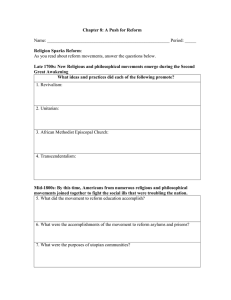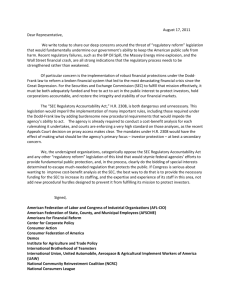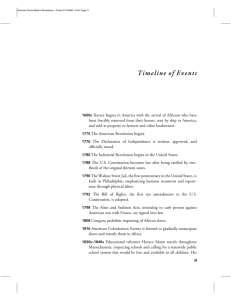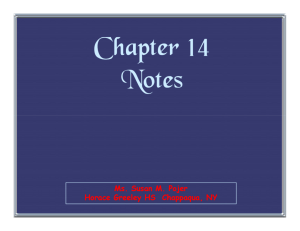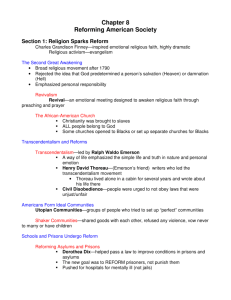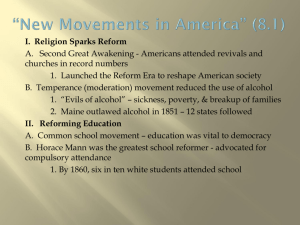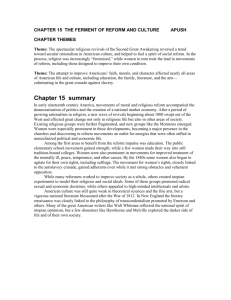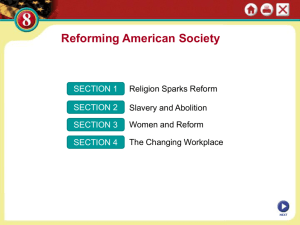Ch8Sec1-4
advertisement
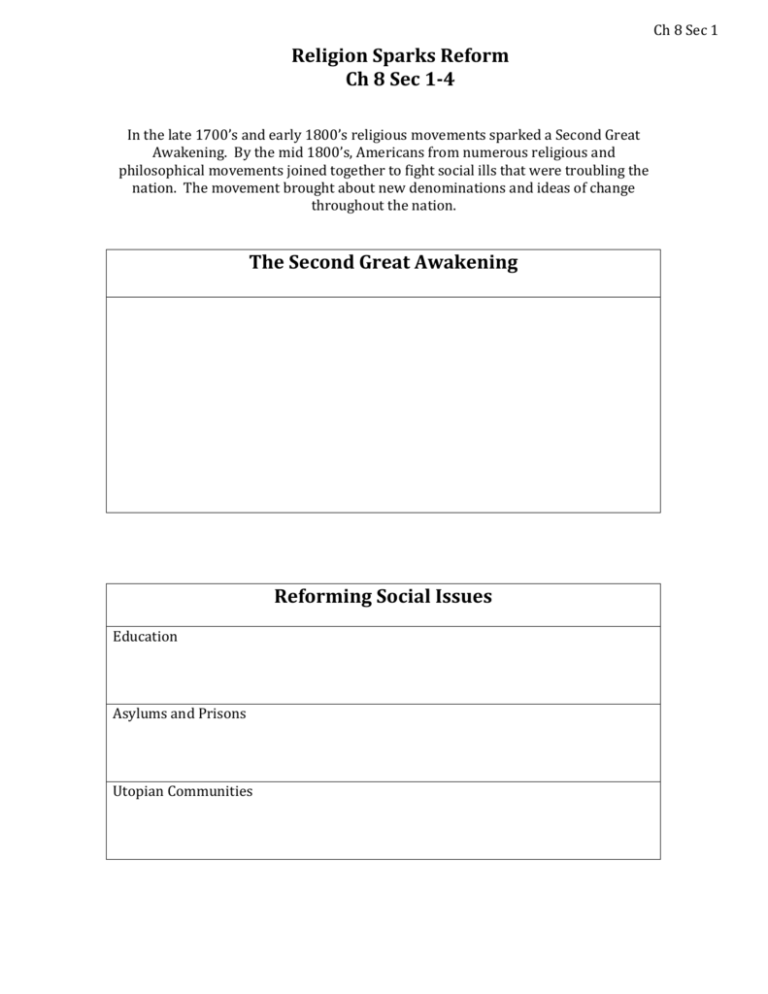
Ch 8 Sec 1 Religion Sparks Reform Ch 8 Sec 1-4 In the late 1700’s and early 1800’s religious movements sparked a Second Great Awakening. By the mid 1800’s, Americans from numerous religious and philosophical movements joined together to fight social ills that were troubling the nation. The movement brought about new denominations and ideas of change throughout the nation. The Second Great Awakening Reforming Social Issues Education Asylums and Prisons Utopian Communities Ch 8 Sec 2 Slavery and Abolition By the 1820’s, slavery had become a hotly debated issue, even among those who opposed it. Most African Americans living in America had been born here. Their experiences varied widely, depending on where they lived and whether they were free. In 1831, Nat Turner led slaves in a bloody rebellion. A frightened and outraged South cracked down on African Americans, both slaves and free William Lloyd Garrison David Walker Fredrick Douglas Nat Turner Rural Slaves Urban Slaves Free Blacks New restrictions placed on African Americans Arguments made to support slavery Congress decision to prevent debate on slavery Ch 8 Sec 3 Women and Reform Discriminated against at the 1840 World’s Anti-Slavery Convention, Elizabeth Cady Stanton and Lucretia Mott vowed, “to hold a convention…and form a society to advocate the rights of women What took place at the Seneca Falls Convention in 1848? Despite limitations, women participated in all the important reform movements of the 19th Century. Below is a chart that will help you understand those movements. Movement Abolition Temperance Women’s Education Health Reform for Women Women’s Rights Key Women Leaders Efforts Made on Behalf of the Movement The Changing Workplace Until the 1820’s, only the first step in the manufacturing of clothing had been mechanized. When the Industrial Revolution made its way over to the United States, many radical new ideas to mass-produce products created a boom in manufacturing and industry. This also led to unsafe working conditions for the working population and a cry for reform in the workplace. Read about changes in the workplace, and supply the missing information below. Causes Effects The cottage industry declines and dies. The Industrial Revolution sparks the rapid spread of factory production. The Industrial Revolution brings about the use of production processes dependant on new machine and interchangeable parts. Young farm girls and women flock to Lowell and other mill towns. Workers strike at Lowell in 1834 and 1836 The company threatens to recruit local women to fill strikers’ are criticized by the local press and clergy; strike leaders are fired. Male artisans and unskilled workers also strike in the 1830’s and 1840’s. Unskilled workers become easily replaceable by immigrants eager for work. Poor wages; poor working conditions; long workdays; ease of breaking strikes all point to the need for unity among laborers. The Supreme Court hands down its decision in Commonwealth v. Hunt. Ch 8 Sec 4
